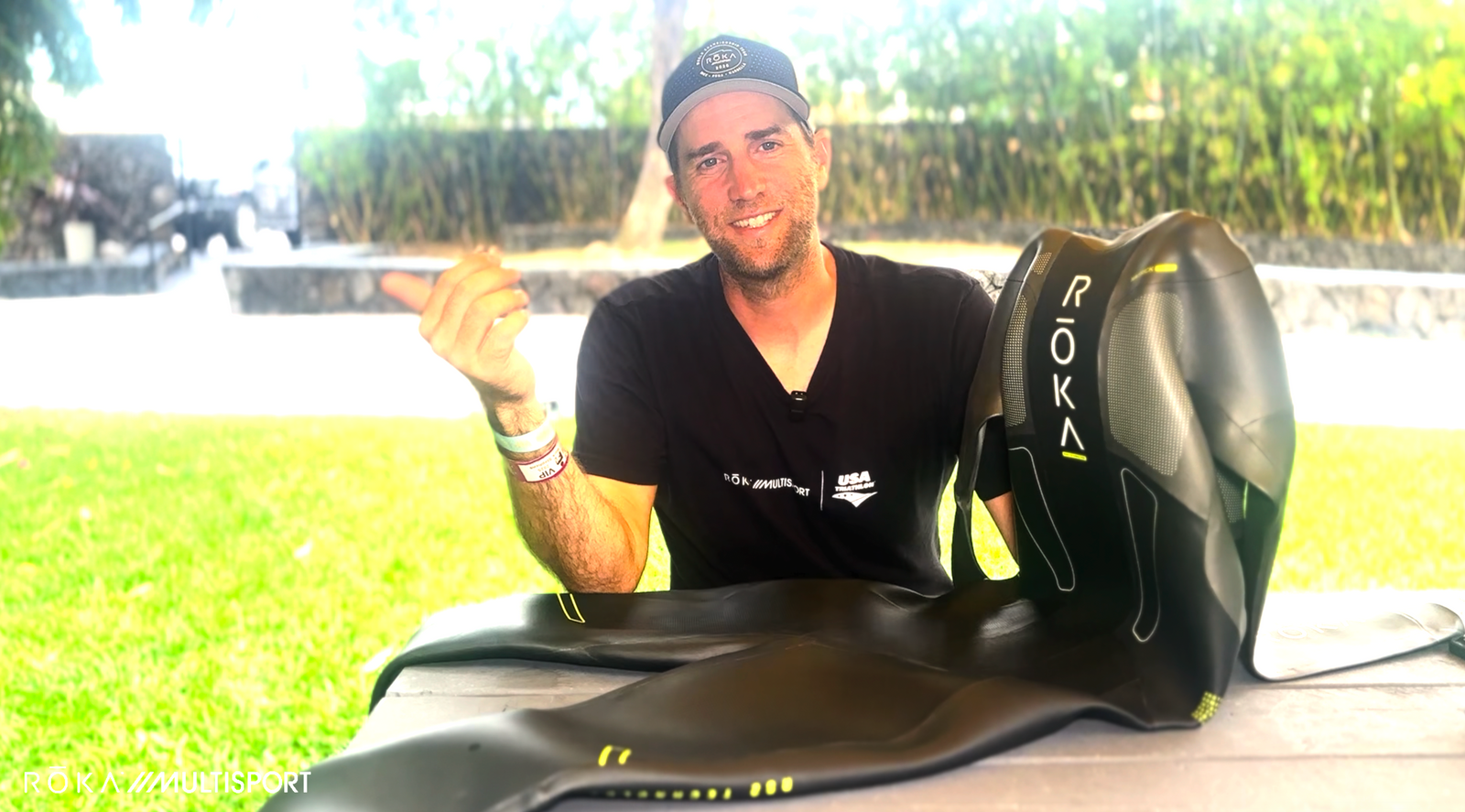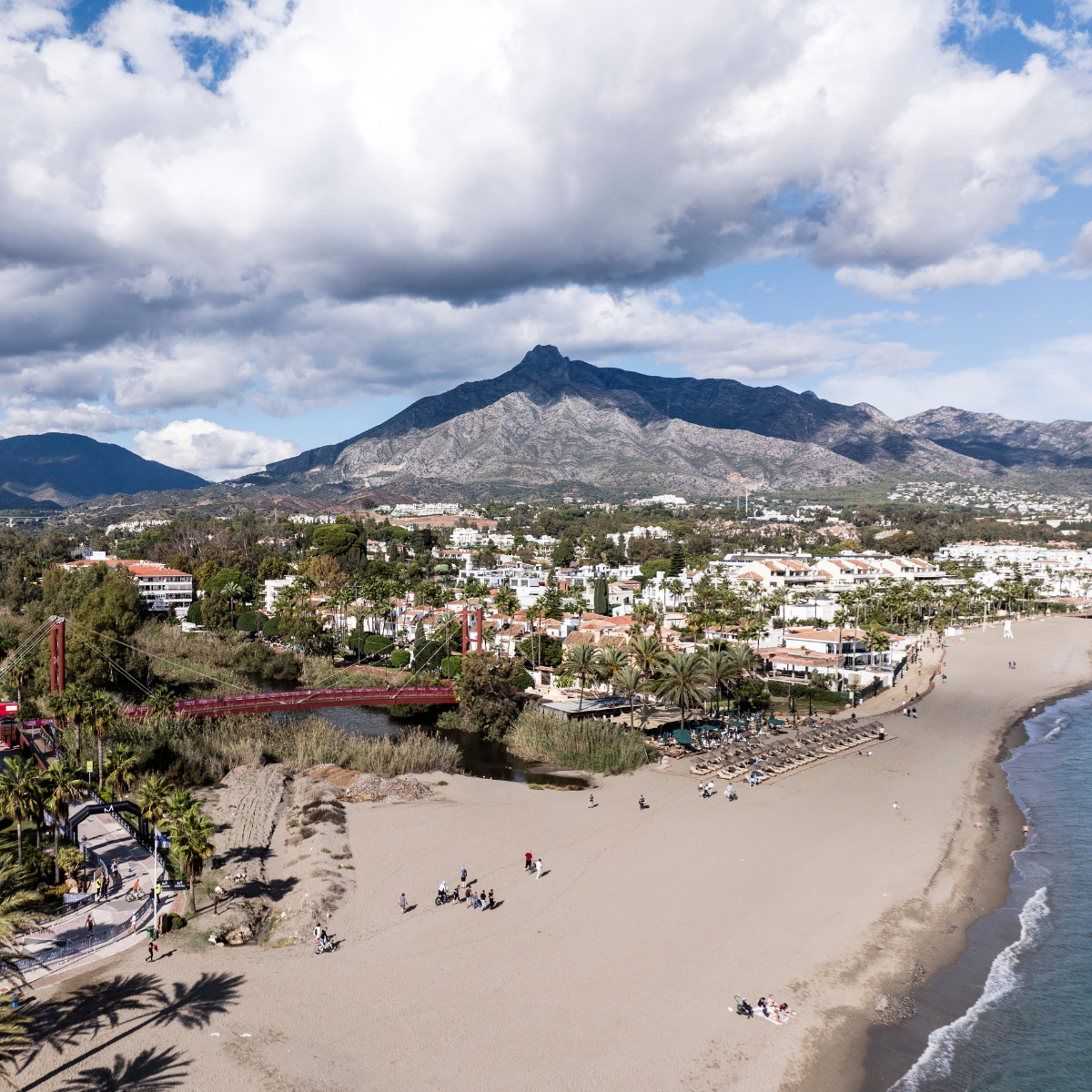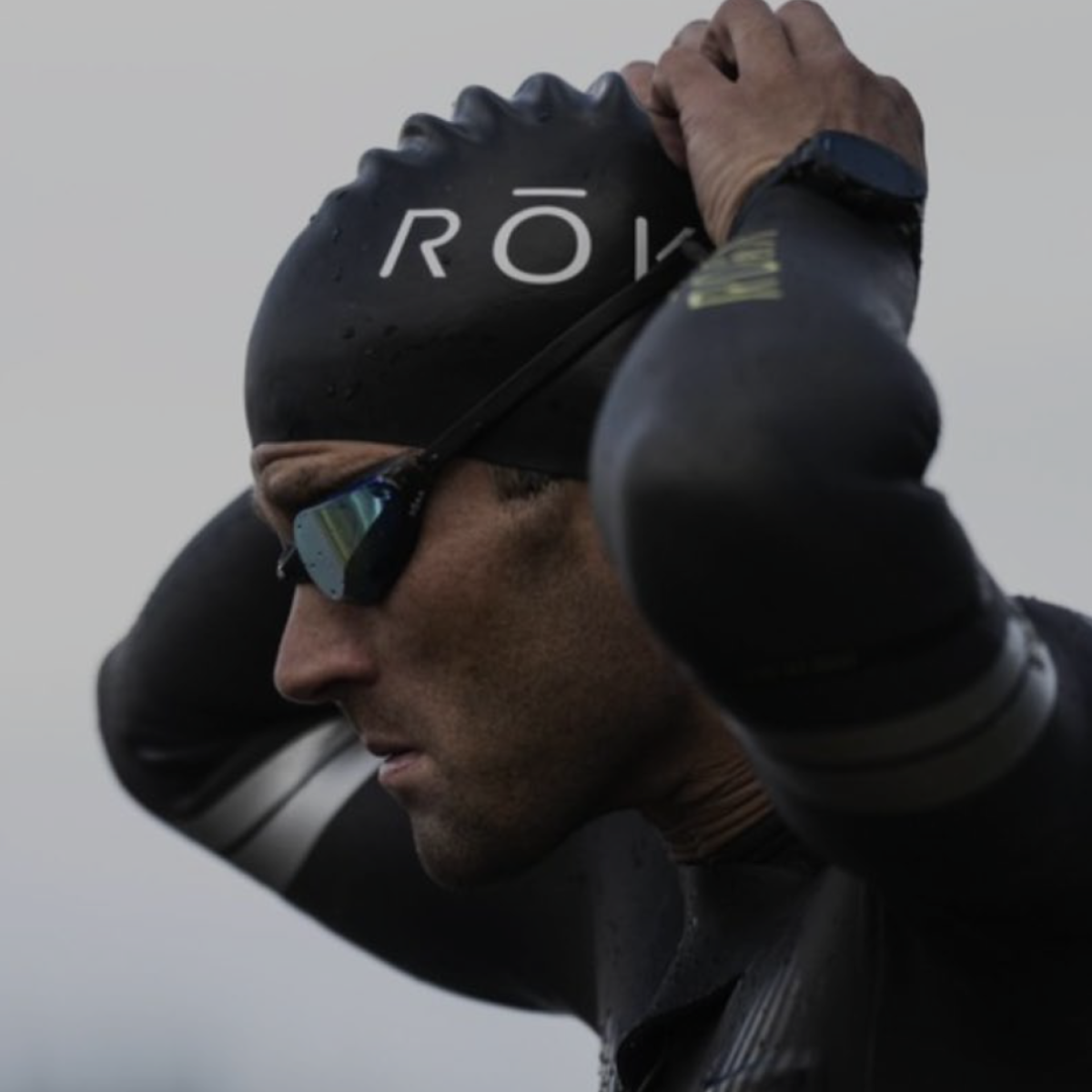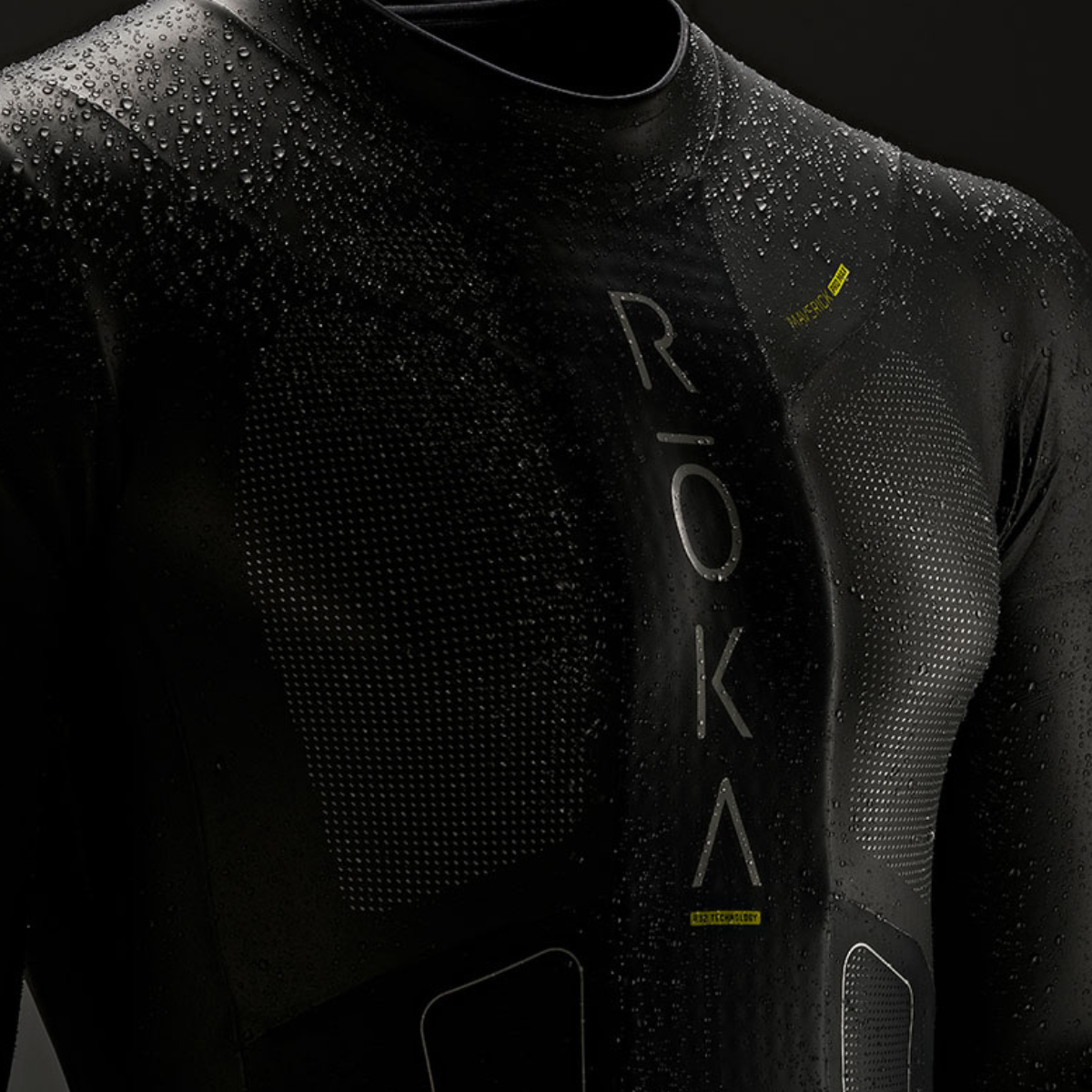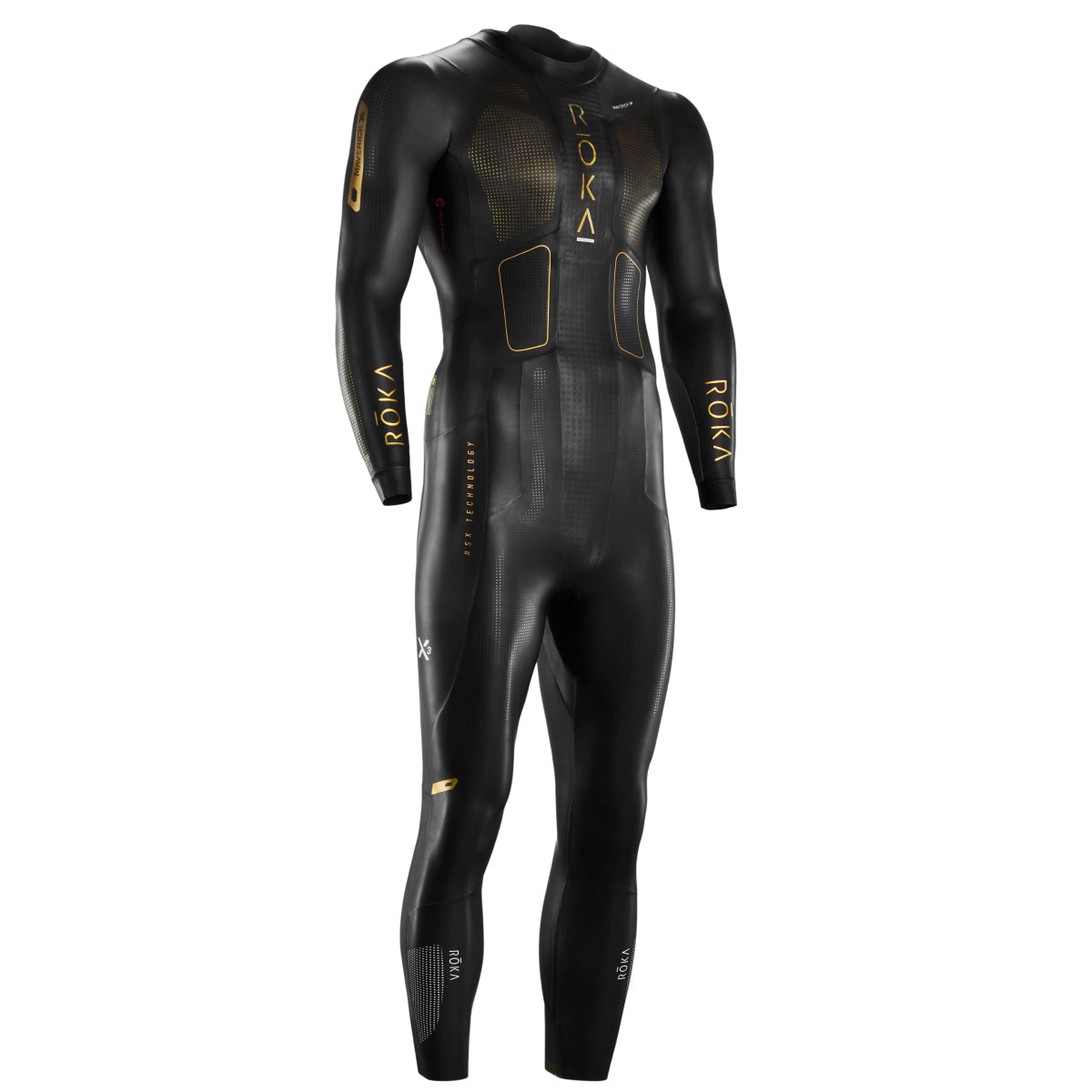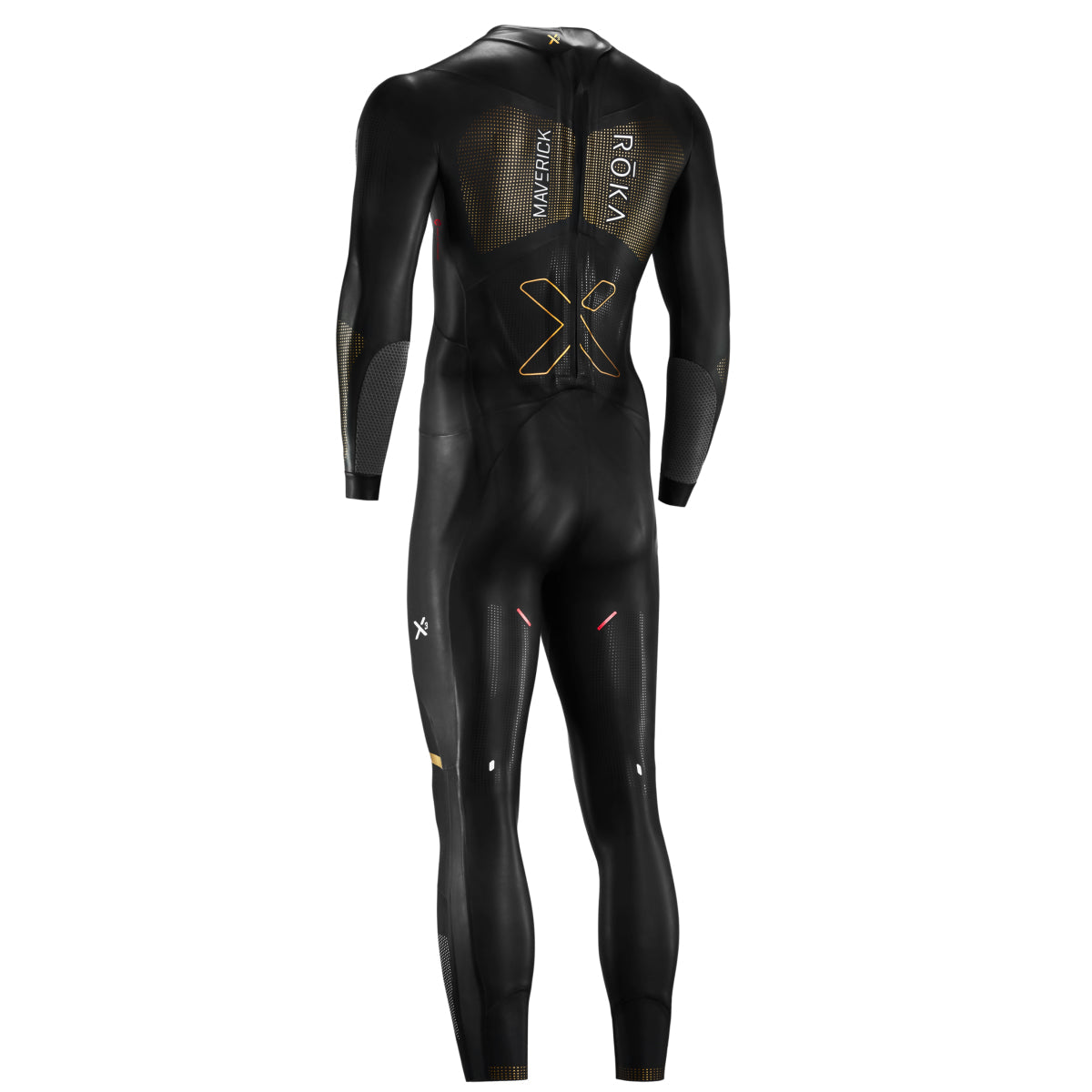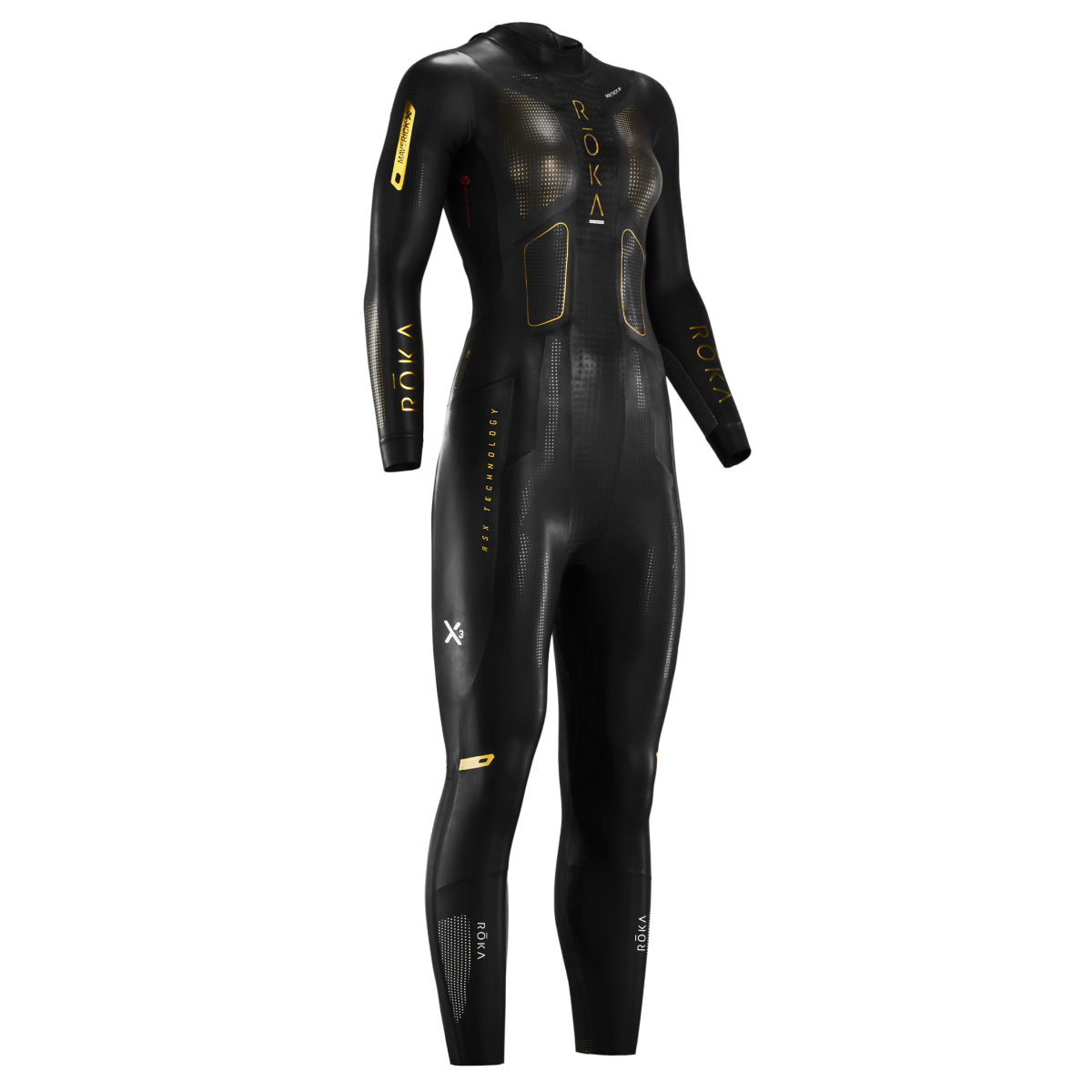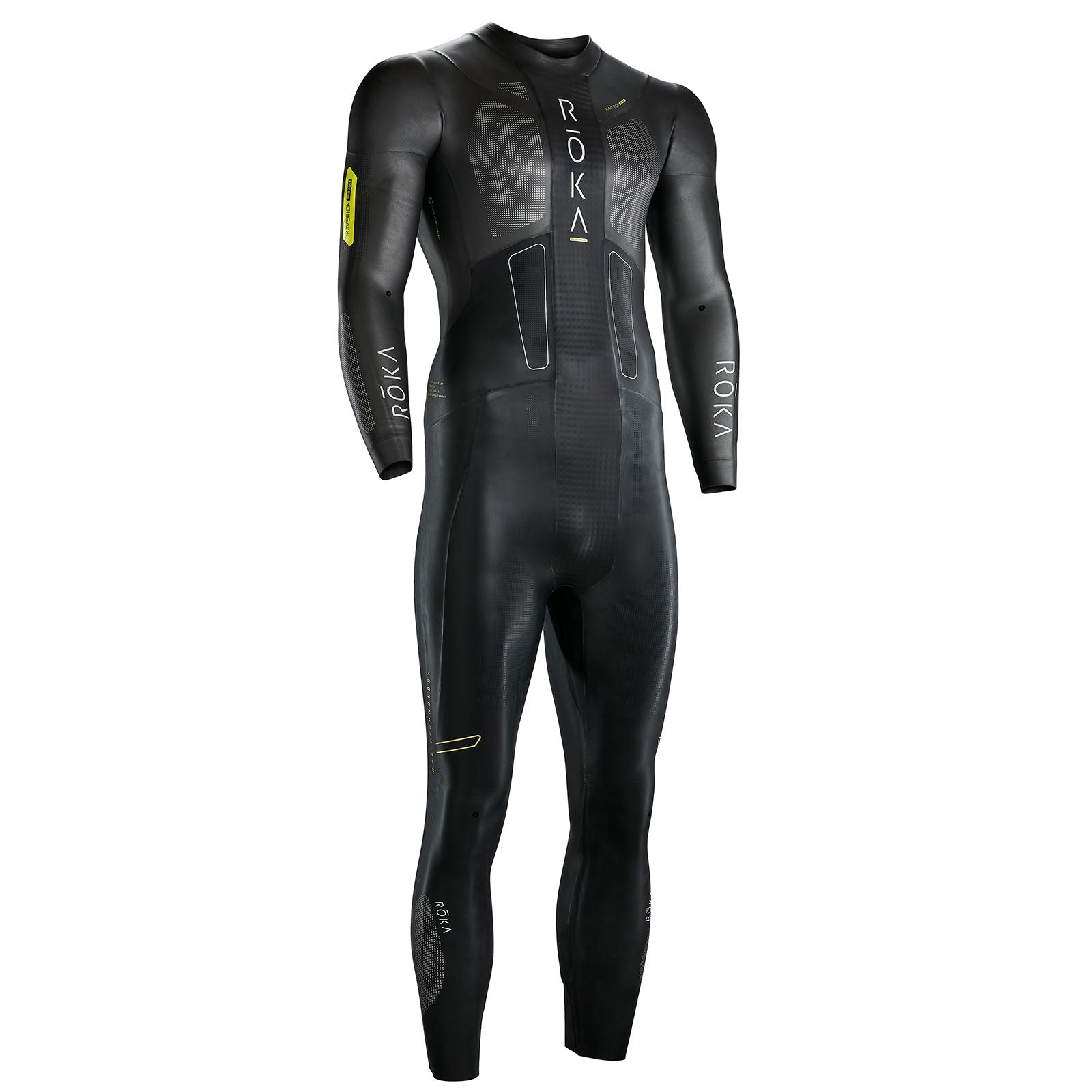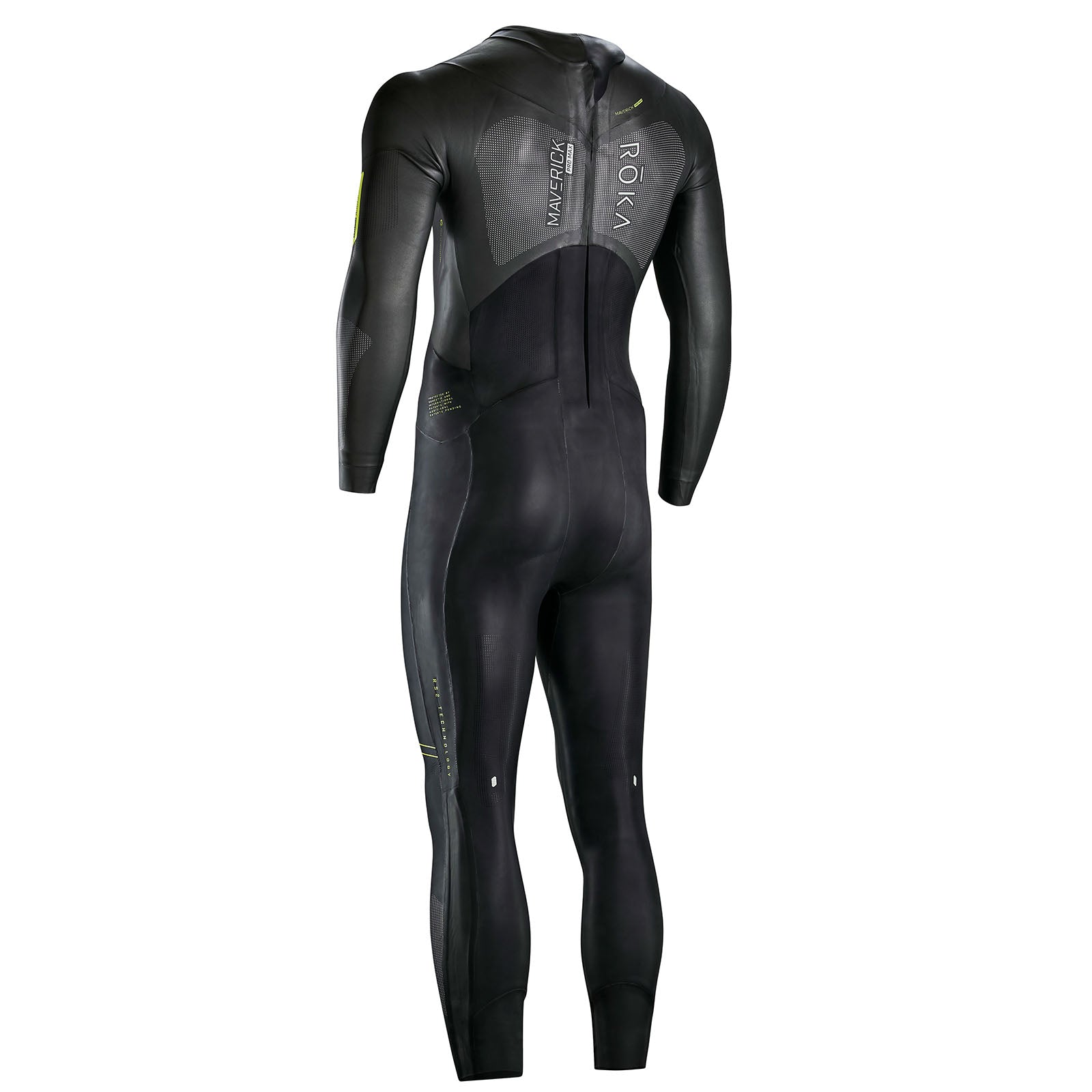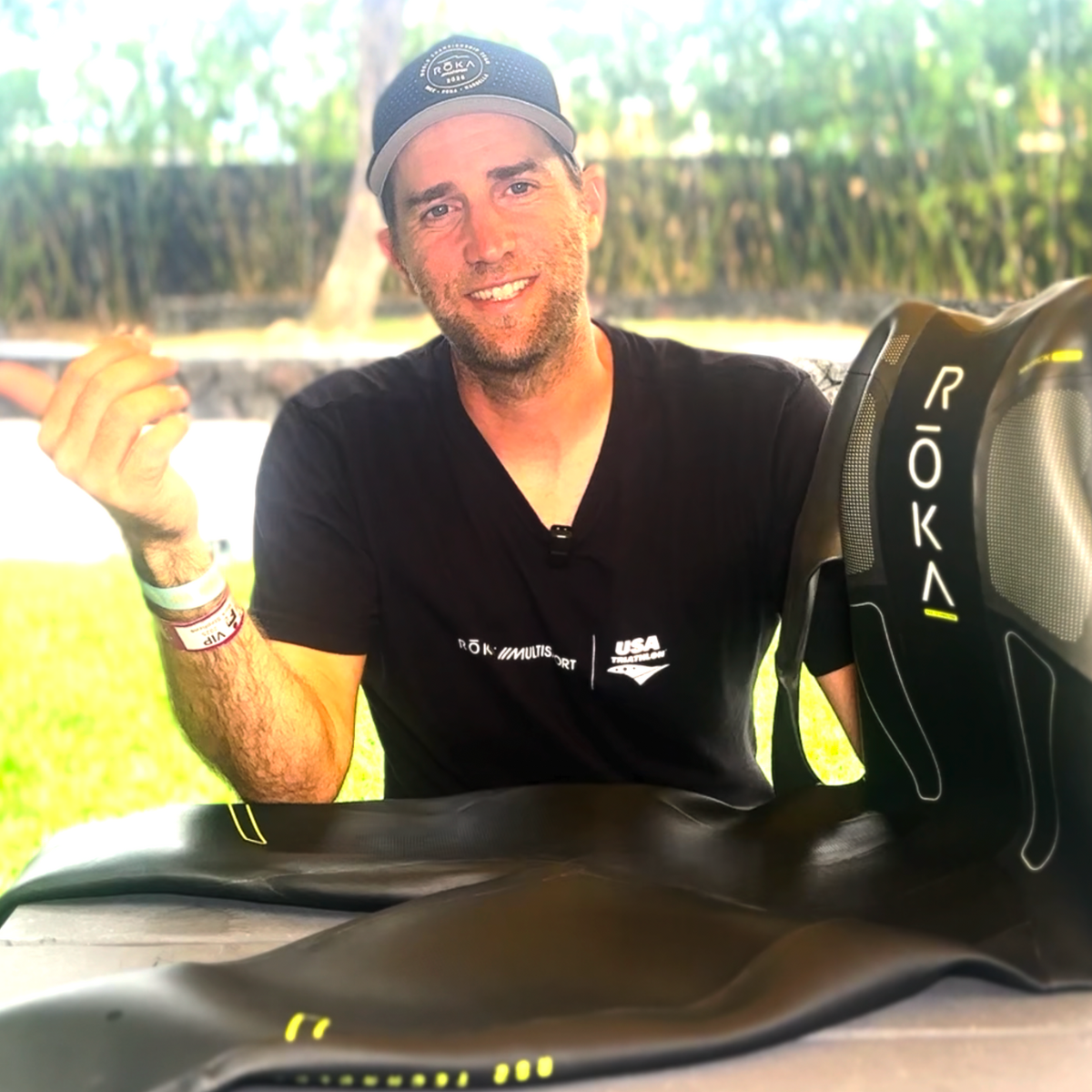ROKA Multisport’s SVP of Design, Mark Stephens, is a wetsuit whisperer. A neoprene virtuoso. He’s a Stanford All-American swimmer, USA Swimming Senior National Champion, and graduate of Stanford’s d.school, a world-renowned hub of design innovation. In other words, he knows swimming and design inside and out. That genius shines in our Maverick wetsuits–the fastest triathlon wetsuits on the planet.
In this video, Mark gives an insider look into our design process, featuring the new Maverick ProMax.
“Wetsuits literally cover all of your body, so it's a really cool way for us to guide you and put you in the right swimming position for your race,” Mark says.
From neoprene and liners, to thickness and stretch, here’s how Mark and our team design wetsuits that help put swimmers in the ideal body position for max speed, and encourage proper technique–all without sacrificing comfort.
Prefer to read? Find the full transcript below.
00:00 INTRODUCTION
0:07: Today I want to talk to you about wetsuit design and what goes into building our wetsuits, and how we make them.
0:15: We always say the fastest way to get faster in swimming is to improve your technique, and so we're trying to build suits that really build proper swimmer technique, body position and proper flotation in the water.
0:27: Wetsuits literally cover all of your body, so it's a really cool way for us to guide you and put you in the right swimming position for your race.
0:39: Wetsuit construction is this really crazy complicated 3D puzzle. You have the variability of the neoprene itself, like the stretch of the neoprene, how it stretches one way and another way.
0:52: You have the thickness of the neoprene which affects your buoyancy and your stretch. And then you have the liner on the inside, which also has a lot of different stretches and variability.
1:05: It's all about positioning all of those pieces together on the body to create the right swimming position for you.
1:12: So our wetsuits have a lot of different seam lines everywhere that you can kind of see, and they're all purposely built.
1:19: We are trying to maximize your body rotation or your “downhill” body position so that you know you're swimming as fast as you can.
1:28: It's about identifying what is the right neoprene for me in this area of my body, and then what is the thickness that I need, what's the liner that I need, and how to map it all up together.
1:42: PATENTED CENTERLINE BUOYANCY FOR IDEAL BODY POSITION AND ROTATION
1:43: A really cool feature of our wetsuits is our Centerline Buoyancy that we created when we first designed our wetsuits. [ROKA founders] Rob and Kurt, also former Stanford swimmers, got these wetsuits, and they just couldn't swim in them.
1:58: They were just so restricted on their shoulders. They just couldn't rotate.
2:02: They could feel like they were kind of in a scuba suit. Like sitting on a surfboard and they couldn't really do anything, and they realized that they wanted to create this freedom that swimmers need.
2:12: To swim properly in the water and get that free flow, that “easy speed” so we can get out fast. So the first thing that they built was a trademark of ROKA, the center line that you see down the middle.
2:27: So we have a thick panel down the middle as it tapers out towards the center and then it’s thinnest on the arms.
2:34: This is to encourage rotation.
2:38: So when you're thinking about swimming, rotating is one of the most important pieces. Because imagine, I always say you're trying to reach for something on top of the top of the fridge.
2:49: You don't stand flat footed and reach your hand up.
2:52: You kind of rotate your body and you get those couple inches to get that stuff that's on top of the fridge.
2:57: Imagine doing that every single swim stroke. You get a couple more inches every time you rotate your body.
3:01: So rotation is hugely important in swimming. So we wanted a suit that encouraged rotation.
3:06: A lot of these wetsuits out there didn't.
3:07: They kind of created this 5 millimeters everywhere and you created this surfboard effect where you were flatfooted, essentially, while you're swimming. So we wanted to encourage that rotation effect.
3:17: So that's the center line buoyancy here.
3:23: We also did want to increase our legs and foot buoyancy. So we do maximize legs as much as we can on the lower half of the body, kind of lift those legs up. In triathlon, you don't want to kick a lot.
3:37: You want to have like a 2 beat kick at most, and save the legs and save the matches for later in the race.
3:43: So we do want to encourage this, by having the legs in a level position that lets you swim in a downhill, or proper buoyancy profile.
3:54: On a lot of our suits we actually created this thinner layer down the side of the legs.
4:03: Again, that's similar to the center line buoyancy.
4:05: We don't want our legs to stay flat.
4:07: We wanted to actually have something, where when we started to rotate, it popped and encouraged that rotation, so we can get our hips all the way over and then rotate all the way back.
4:17: So that's our center line buoyancy profile.
4:22: ARMS UP TECH FOR SHOULDER COMFORT
4:23: And we just had this aha moment where most everyone in the apparel world designs patterns with your arms down because you know we're all walking around with our arms down.
4:36: No one's walking around like this, but when we're in the water we're swimming, our arms are up most of the time. Our arms are up and out and in front of us. So we decided
4:47: Why don't we design the actual wetsuit with the steady state as an arms up position?
4:52: So if you look at our suit. The normal position of the arm is up.
4:58: So we have this just unlocked the comfort that comes with swimming in a ROKA wetsuit.
5:06: it might feel like you got a little bit of extra material, but that's because your arms are down. When you're out there and swimming, your arms are up front, it almost springs you forward and kind of gets you in that natural swimming position.
5:19: NAILING THE NECKLINE FOR SPEED AND COMFORT
5:20: Getting that right neckline took a lot of iteration.
5:23: We did a lot of trial and error until we found the perfect neckline that we thought as swimmers was the best.
5:29: We didn't want something that comes up and chokes you.
5:31: We didn't want something that was too open that let water down the front.
5:34: So again, it took us a lot of iterations and a lot of design testing, but we finally nailed our neckline, which we applied to all of our ROKA styles, along with our arms up pattern applied to all of our ROKA styles.
5:49: SUPPORTING THE CORE FOR IDEAL BODY POSITION AND REDUCED FATIGUE
5:50: As we were watching Olympian-level swimmers out there, we realized how important that the core was. How do we lock in this core so that your strength in your engine is secured?
6:00 What we did is we, again, used our three- dimensional puzzle of liners and different stretches to help create points along the front and the back of the suit.
6:20: That just locks that core in so that you can swim tall when you're in the water.
6:28: Imagine someone lays their hand on your lower back. All of a sudden you sit up straight, and that's what we wanted our suit to do during your entire swim: have you swim up straight so that you can maximize each stroke in the water, and increase that distance per stroke.
6:43: When we're watching swimmers at the end of their races, I think that's the most important part of the time to understand where we can make improvements. Because the end is where you're most tired, and as you get tired, you get sloppy. That's another reason for the core stability that we've created into the suit.
7:00: So with the paneling we kind of lock that back in place. Especially as you fatigue, a lot of swimmers get really loosey goosey, get really sloppy, kind of sway their hips side to side instead of rotating their hips and keeping strong.
7:15: So that’s another reason for the taping and support panels that we put into the suit, now that we're continuing to evolve our Maverick line.

